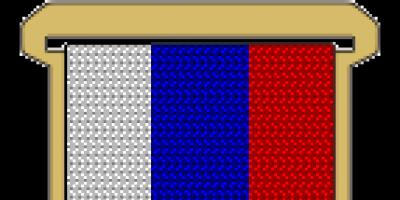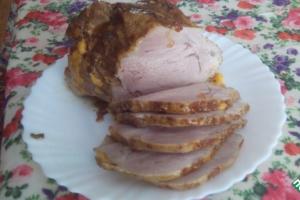Pelargonium zonale (Latin Pelargonium Zonale) is the most common group of ornamental geraniums. In common parlance it is called “kalachik”. The name of the culture, both in Latin and in Russian, is due to the presence on the leaf of the plant of a semicircular color stripe in the form of a horseshoe or kalach, dividing it into contrasting zones. This group of pelargoniums is quite extensive and diverse, including several hundred varieties.
Depending on the classifying characteristics, zonal pelargoniums are usually divided into the following subgroups:
- By scale of growth:
- miniature. Flower growers lovingly call them “minks”. Some varieties have the prefix “nano”. These are graceful small bushes no more than 12 cm high;
- dwarf. They have a length from 12 to 25 cm. They are valued for their splendor and branching;
- short. They exceed dwarf ones by only 10 cm;
- medium height. Their range is from 30 cm to 50 cm;
- tall. They drive out stems from half a meter to one and a half meters high.
- By the number of layers of petals in flowers:
- single(simple or non-double). The petals are arranged in one row. Their number does not exceed five;
- semi-double. Usually consist of two layers of petals, numbering up to eight;
- terry. There are many petals, more than eight. They are nested one inside the other.
- By leaf color:
- regular green. They have a characteristic color spot-zone of a slightly darker or lighter shade;
- variegated or variegated. They are distinguished by heterogeneity of color in the form of inclusions, stains, “fantasy” patterns, and “torn” edges. There are both two-color variegation and multicolor. Moreover, colors can be very diverse: yellow, silver, red, chocolate and even pinkish.
- According to the shape of the inflorescences:
- bouquet. They have simple flowers and long stems. Often used as garden crops, good for cutting;
- rosebuds. The subgroup includes the most beautiful varieties, which, due to the sophistication and pretentiousness of the peduncles, are equated to real Rosaceae. Characterized by a full flower with wavy, rounded petals;
- tulip-shaped. Always closed, dense buds have the shape of tulips;
- stellates or stellars(from the Latin “stellar” - starry). The umbrellas of these pelargoniums resemble prickly hedgehogs. Pointed petals give the inflorescences a resemblance to dahlias.
- dianthus. As the name suggests, these pelargoniums are similar to carnations in their flower shape, characterized by wavy, toothed petals.
Care
Zonal pelargoniums are the most unpretentious and drought-resistant type of geranium. Caring for them is simple and affordable, not requiring special knowledge or specific agricultural techniques. A native of southern latitudes, geranium loves an abundance of light. In the warm season she prefers open ground. With sufficient light, the plant produces large caps of peduncles and forms additional strong side shoots, a characteristic colored band clearly appears on the leaves.
Although under natural conditions, in their native Africa, geraniums grow in rocky soil poor in organic matter, they respond gratefully to mineral fertilizing. Pelargoniums are watered complex fertilizers from spring to autumn. In winter, plants are given rest.

Reproduction
Pelargonium zonalis is reproduced in two ways: by seed and cuttings. As for the second option, it is preferable for varietal plant species obtained as a result of complex breeding work, since the seeds of such geraniums are either sterile or do not carry all the qualities of the mother plant. For example, it is known that the trait of a flower being double is not transmitted when pelargonium is propagated from seeds. The same rosebud, tulip-flowering, cactus-like zonal pelargoniums can be reproduced exclusively by rooting cuttings. Seed propagation is used for garden bouquet geraniums. It should be noted that if a variety allows the possibility of growing a flower in both ways, it is better to choose growing from seeds. With this approach, the geranium is strong, stocky, ideally adapted to the conditions of a specific environment.
The procedure of seed germination itself is extremely exciting. From this point of view, varietal mixtures are especially interesting - flower growers wait with bated breath for the first buds to examine the color of the umbrella. Growing pelargonium from seeds is not difficult. It is important to remember just a few rules:
- The best time for planting is the end of winter or the beginning of spring. If the procedure is carried out for some reason late autumn or in the middle of winter, the sprouts must be additionally illuminated with special lamps, otherwise they will grow frail and unviable. To be fair, it is worth noting that there is no particular point in planting seeds in the fall. Practice shows that pelargoniums planted in early spring bloom simultaneously with plants sown several months earlier.
- Geranium does not like excess humidity. The same law applies to its seeds. They need to be planted in soil that is soaked but not flooded to the point of puddles. If you overdo it with water, the seeds will turn black and rot.
- Pelargonium zonalis prefers surface planting. The seeds are planted to a depth of 1 cm. So that when further watering they did not float up, the dried soil is irrigated with a spray bottle.
- Germinating plants in cotton pads has worked well. A cotton sponge is thoroughly moistened with water, a seed is placed in the middle, which is covered with another wet disk. This entire structure is placed in a container with a lid and placed in a warm place. Periodically lift the lid to allow air access. Once a day, carefully unwrap the sponges to see if the seeds have hatched. When a whitish sprout appears, the seed is carefully removed from the container and placed into a loose substrate at a shallow depth. Fresh, high-quality seeds usually germinate within 2-5 days.
- All the time from the moment of planting until the appearance of the first shoots, the geranium is kept under film or glass, creating greenhouse conditions for it. Caring for sprouts during this period includes regular ventilation of the greenhouse, moderate soil moisture, and additional lighting if necessary.
- After the first three true leaves appear, the film is removed from the container and the sprouts are planted in separate pots.
If all the rules for seed propagation of geranium are followed, the plant will bloom 4-5 months after planting.
To the credit of zonal pelargonium, it must be said that it not only decorates the home, but also improves its health. The phytoncides contained in the green mass of geranium kill pathogenic microbes, and the volatile aromatic substances released by the bush have a beneficial effect on the nervous system.
Modern varieties of pelargonium are difficult to compare with the bushes of “grandmother’s” geraniums, whose scarlet or pink umbrellas proudly flaunted on the window sills of city apartments, in front gardens and on balconies. Despite the fact that plants have not become more capricious, flower growers today have access to varieties that delight with the long flowering of not simple, but densely double flowers, and the palette of inflorescences is unusually wide. This is evidenced by descriptions and photos of pelargonium varieties.
 The double pink-crimson flowers of pelargonium Pebbles with a lightened center seem even larger, since the plant itself is not too large and rightfully belongs to the category of miniature.
The double pink-crimson flowers of pelargonium Pebbles with a lightened center seem even larger, since the plant itself is not too large and rightfully belongs to the category of miniature.
 Despite the emergence of new varieties of pelargonium, the photo of this fluffy, easy-to-shape bush invariably attracts the attention of flower growers, who will not be disappointed when growing it on a windowsill. The dense caps of inflorescences look even more voluminous due to the light, almost white reverse side petals.
Despite the emergence of new varieties of pelargonium, the photo of this fluffy, easy-to-shape bush invariably attracts the attention of flower growers, who will not be disappointed when growing it on a windowsill. The dense caps of inflorescences look even more voluminous due to the light, almost white reverse side petals.
 The delicate dwarf pelargonium Shelk Moira is the first officially recognized creation of Russian breeders. The author of a spectacular plant with dense flowers of an unusual light salmon hue and bright emerald foliage is a resident of St. Petersburg, Irina Kleimova.
The delicate dwarf pelargonium Shelk Moira is the first officially recognized creation of Russian breeders. The author of a spectacular plant with dense flowers of an unusual light salmon hue and bright emerald foliage is a resident of St. Petersburg, Irina Kleimova.
 The inflorescences of this pelargonium variety, as in the photo, are dense, the flowers are densely double, with wavy petals, lightened on the back side.
The inflorescences of this pelargonium variety, as in the photo, are dense, the flowers are densely double, with wavy petals, lightened on the back side.
 Another terry plant of the Brookside Fantasy variety is a bright representative of zonal pelargoniums. Compact bushes with rich green leaves with a clearly visible dark stripe delight with inflorescences of a delicate pink-lilac hue.
Another terry plant of the Brookside Fantasy variety is a bright representative of zonal pelargoniums. Compact bushes with rich green leaves with a clearly visible dark stripe delight with inflorescences of a delicate pink-lilac hue.
 At the stage when the buds are just opening, closer to the center the petals have a slight green tint, then their reverse side acquires a pink-cream color, slightly lighter than the entire inflorescence. The flower caps are large, comparable to the inflorescences on standard bushes, although this pelargonium is a real miniature.
At the stage when the buds are just opening, closer to the center the petals have a slight green tint, then their reverse side acquires a pink-cream color, slightly lighter than the entire inflorescence. The flower caps are large, comparable to the inflorescences on standard bushes, although this pelargonium is a real miniature.
 Red-crimson flowers, as in the photo, pelargonium varieties Bold Carmine can be classified as semi-double or double. The plant itself is compact, accepts fertilizing well and readily produces elongated peduncles with caps of carmine flowers.
Red-crimson flowers, as in the photo, pelargonium varieties Bold Carmine can be classified as semi-double or double. The plant itself is compact, accepts fertilizing well and readily produces elongated peduncles with caps of carmine flowers.
 The back side of the petals of this variety is lighter in color. The foliage is bright, with a noticeable concentric stripe in the middle of the leaf blade.
The back side of the petals of this variety is lighter in color. The foliage is bright, with a noticeable concentric stripe in the middle of the leaf blade.
 Zonal pelargonium Saxdalens Selma forms a large, strong bush, distinguished not only by powerful shoots, but also by voluminous beautiful inflorescences consisting of soft pink flowers. Plants of this variety bloom beautifully and respond to care. The bush is small, easily branching.
Zonal pelargonium Saxdalens Selma forms a large, strong bush, distinguished not only by powerful shoots, but also by voluminous beautiful inflorescences consisting of soft pink flowers. Plants of this variety bloom beautifully and respond to care. The bush is small, easily branching.
 Many gardeners pay attention to the unusual structure of spectacular pink flowers, which are more reminiscent of rosaceous varieties.
Many gardeners pay attention to the unusual structure of spectacular pink flowers, which are more reminiscent of rosaceous varieties.
 The light, airy and very large inflorescences of this pelargonium variety, as in the photo, are easy to recognize by the amazingly beautiful pink-salmon hue of the flowers.
The light, airy and very large inflorescences of this pelargonium variety, as in the photo, are easy to recognize by the amazingly beautiful pink-salmon hue of the flowers.
 But this is not the only advantage of the variety. Pelargonium foliage has a golden color green color. The bushes are characterized by slow growth and compactness.
But this is not the only advantage of the variety. Pelargonium foliage has a golden color green color. The bushes are characterized by slow growth and compactness.
 Terry le Pirat amazes with the abundance and splendor of its inflorescences. The flowers of this variety have a velvety, deep red color and in shape, at the beginning of flowering, are very reminiscent of blooming roses.
Terry le Pirat amazes with the abundance and splendor of its inflorescences. The flowers of this variety have a velvety, deep red color and in shape, at the beginning of flowering, are very reminiscent of blooming roses.
 Pelargonium is distinguished by the fact that the flowers do not fall off for a long time, and the plants can be used as an hanging crop to decorate a veranda or garden.
Pelargonium is distinguished by the fact that the flowers do not fall off for a long time, and the plants can be used as an hanging crop to decorate a veranda or garden.
 Since the shape of the densely double flowers of pelargonium Noel Gordon is very reminiscent of roses, the plant can also be classified as a rosebud variety. The bushes of this zonal pelargonium are compact and densely covered with foliage.
Since the shape of the densely double flowers of pelargonium Noel Gordon is very reminiscent of roses, the plant can also be classified as a rosebud variety. The bushes of this zonal pelargonium are compact and densely covered with foliage.
 Thanks to the abundance of large pink flowers with wavy petals, the dense inflorescences of this variety are very decorative and do not fall off for a long time.
Thanks to the abundance of large pink flowers with wavy petals, the dense inflorescences of this variety are very decorative and do not fall off for a long time.
 Pelargonium PAC Viva Maria, which has German roots, like its relatives, blooms profusely and for a long time, while the bushes are very compact, and the inflorescences are luxurious and large.
Pelargonium PAC Viva Maria, which has German roots, like its relatives, blooms profusely and for a long time, while the bushes are very compact, and the inflorescences are luxurious and large.
 Flowers of this variety are easily recognized among the mass of other inflorescences by their white color with a bright crimson spot at the base of each petal. As a result, simple or semi-double pelargonium flowers stand out from the general series, and plants of this variety are worthy of becoming valuable specimens in the collections of both connoisseurs of the species and beginners.
Flowers of this variety are easily recognized among the mass of other inflorescences by their white color with a bright crimson spot at the base of each petal. As a result, simple or semi-double pelargonium flowers stand out from the general series, and plants of this variety are worthy of becoming valuable specimens in the collections of both connoisseurs of the species and beginners.
 The decorative effect of zonal pelargonium Powder Puff is achieved through very dense salmon-colored inflorescences and beautiful leaves with a clearly defined contrasting stripe.
The decorative effect of zonal pelargonium Powder Puff is achieved through very dense salmon-colored inflorescences and beautiful leaves with a clearly defined contrasting stripe.
 The petals on the back side are lighter than on the top. The plants are small in size, which will be appreciated by gardeners who only have indoor window sills at their disposal.
The petals on the back side are lighter than on the top. The plants are small in size, which will be appreciated by gardeners who only have indoor window sills at their disposal.
 The salmon coloring of the wavy petals of Lake pelargonium becomes almost white towards the edges, and the full color appears only towards the center of the large double flowers. Moreover, for brighter flowering, it is recommended to expose the plants to the sun; in the shade, the colors fade noticeably.
The salmon coloring of the wavy petals of Lake pelargonium becomes almost white towards the edges, and the full color appears only towards the center of the large double flowers. Moreover, for brighter flowering, it is recommended to expose the plants to the sun; in the shade, the colors fade noticeably.
 The plant itself belongs to standard zonal varieties and requires careful shaping. The leaves of this pelargonium variety, as in the photo, are very elegant thanks to the wide contrasting border of a brownish-green hue.
The plant itself belongs to standard zonal varieties and requires careful shaping. The leaves of this pelargonium variety, as in the photo, are very elegant thanks to the wide contrasting border of a brownish-green hue.
 Dwarf pelargonium Ludwigsburger Flair blooms readily and profusely, but in order for the plant to really look like a miniature one, the gardener will need careful work when shaping the bush.
Dwarf pelargonium Ludwigsburger Flair blooms readily and profusely, but in order for the plant to really look like a miniature one, the gardener will need careful work when shaping the bush.
 The beautiful double flowers of this variety have a pink color, which becomes brighter towards the center and becomes almost white or greenish towards the corrugated edge.
The beautiful double flowers of this variety have a pink color, which becomes brighter towards the center and becomes almost white or greenish towards the corrugated edge.
 The gorgeous, unusually shaped flowers of the zonal pelargonium Mallorca force us to classify this variety as a cactus. The peculiarity of the flowers is a multitude of jagged petals, pointed along the edges, combining red, white and greenish stripes in color.
The gorgeous, unusually shaped flowers of the zonal pelargonium Mallorca force us to classify this variety as a cactus. The peculiarity of the flowers is a multitude of jagged petals, pointed along the edges, combining red, white and greenish stripes in color.
 The plant is compact, easily and takes a long time to form new inflorescences. If the bush is in a lighted place, the plant retains small sizes, and in the shade it begins to stretch to standard pelargoniums.
The plant is compact, easily and takes a long time to form new inflorescences. If the bush is in a lighted place, the plant retains small sizes, and in the shade it begins to stretch to standard pelargoniums.
 Leaves with a neat decorative border and barely pink flowers of Dowepoint pelargonium make this luxurious variety stand out from the many double plants of this type existing today.
Leaves with a neat decorative border and barely pink flowers of Dowepoint pelargonium make this luxurious variety stand out from the many double plants of this type existing today.
 The bushes are compact, rather squat, the inflorescences are dense and voluminous compared to the size of the plant.
The bushes are compact, rather squat, the inflorescences are dense and voluminous compared to the size of the plant.
 The incredibly beautiful dwarf pelargonium Elmsett belongs to the zonal variety. And flower growers who see the plant fall in love with the bright, golden-hued leaves and double cream flowers, decorated with red spots and veins.
The incredibly beautiful dwarf pelargonium Elmsett belongs to the zonal variety. And flower growers who see the plant fall in love with the bright, golden-hued leaves and double cream flowers, decorated with red spots and veins.
 The bush blooms long and abundantly, its shape is very neat, so the plant can easily decorate any windowsill.
The bush blooms long and abundantly, its shape is very neat, so the plant can easily decorate any windowsill.
 The flowers of zonal pelargonium Lara Harmony, when fully opened, are incredibly similar to real roses, however, the variety is classified as double. The size of the bush is standard, the leaves have a classic color for the species, the flowers are densely double, lush, with a spectacular pink color, which is somewhat weaker in the lower part of the corolla.
The flowers of zonal pelargonium Lara Harmony, when fully opened, are incredibly similar to real roses, however, the variety is classified as double. The size of the bush is standard, the leaves have a classic color for the species, the flowers are densely double, lush, with a spectacular pink color, which is somewhat weaker in the lower part of the corolla.
 This variety of pelargonium, as in the photo, can be distinguished by its strong shoots, rich green foliage, characteristic of plants of the zonal variety, and double peony-shaped flowers. Thanks to its lush inflorescences, Norrland pelargonium is well known to lovers of this culture and has earned sincere love flower growers.
This variety of pelargonium, as in the photo, can be distinguished by its strong shoots, rich green foliage, characteristic of plants of the zonal variety, and double peony-shaped flowers. Thanks to its lush inflorescences, Norrland pelargonium is well known to lovers of this culture and has earned sincere love flower growers.
 To achieve quality flowering, the plant requires proper care, pruning and attention. And in this case, the bushes will definitely delight you with pink, densely double inflorescences.
To achieve quality flowering, the plant requires proper care, pruning and attention. And in this case, the bushes will definitely delight you with pink, densely double inflorescences.
 Very decorative terry flowers of Passat pelargonium amaze with the light pink shade of their corrugated petals and density, reminiscent of delicate fluffy pompoms. The variety has long been known to pelargonium lovers and enjoys well-deserved attention from both beginners and long-time followers of the culture.
Very decorative terry flowers of Passat pelargonium amaze with the light pink shade of their corrugated petals and density, reminiscent of delicate fluffy pompoms. The variety has long been known to pelargonium lovers and enjoys well-deserved attention from both beginners and long-time followers of the culture.
 The bushes of this zonal pelargonium need shaping, but when good care They bloom for a long time and with high quality.
The bushes of this zonal pelargonium need shaping, but when good care They bloom for a long time and with high quality.
 Granny Barter pelargonium flowers are similar in shape to schoolgirls' ceremonial bows, their petals are so light and delicate.
Granny Barter pelargonium flowers are similar in shape to schoolgirls' ceremonial bows, their petals are so light and delicate.
 Densely double corollas of white and pink color form dense inflorescences that look great on bushes standard height. The variety has proven itself to be trouble-free and very flexible.
Densely double corollas of white and pink color form dense inflorescences that look great on bushes standard height. The variety has proven itself to be trouble-free and very flexible.
 Strong, powerful pelargonium bushes of this variety are covered with dense foliage and luxurious inflorescences consisting of deep red double flowers. A dark stripe along the outside of the leaf plate adds decorativeness to the leaves.
Strong, powerful pelargonium bushes of this variety are covered with dense foliage and luxurious inflorescences consisting of deep red double flowers. A dark stripe along the outside of the leaf plate adds decorativeness to the leaves.
 Pelargonium Ainsdale Duke is very solemn and spectacular. Next to it, many other plants fade, which must be taken into account when selecting collections of varieties.
Pelargonium Ainsdale Duke is very solemn and spectacular. Next to it, many other plants fade, which must be taken into account when selecting collections of varieties.
 The soft pink, very attractive flowers of Bold Ann pelargonium invariably attract the attention of gardeners to this terry variety of a zonal variety.
The soft pink, very attractive flowers of Bold Ann pelargonium invariably attract the attention of gardeners to this terry variety of a zonal variety.
 Pelargonium bushes are neat, the inflorescences do not lose their beauty for a long time, and the plant is undemanding and willingly responds with flowering to simple care.
Pelargonium bushes are neat, the inflorescences do not lose their beauty for a long time, and the plant is undemanding and willingly responds with flowering to simple care.
 Zonal dwarf pelargonium Bold Pixie will definitely please flower growers who love double flowers of an unusual raspberry-pink hue for this crop.
Zonal dwarf pelargonium Bold Pixie will definitely please flower growers who love double flowers of an unusual raspberry-pink hue for this crop.
At home, you can grow absolutely any, even the most exotic, types of flowers from seeds that cannot grow independently in our latitudes. However, this will require a lot of effort, especially in the first stage, which includes getting the first sprouts. But geranium is quite easy to grow from seeds and does not require any special care for the plant in the future.
The flower, firmly established on tables and window sills, belongs to the geranium family and its types vary depending on the zonal affiliation. In addition, there is a special ampelous and ivy-leaved form of pelargonium, but the principles of growing and caring for them are almost the same.
Features of growing pelargonium from seeds
To grow geraniums without problems and quickly, you need to carry out careful selection planting material. Seeds must have Brown color with a slight matte sheen and moderate tint.
The shape of the seeds should be oblong, with small depressions on the sides, the shell should be leathery and dense, size - quite large.
If you come across seeds that are flattened, small, deformed, or that differ from the desired tone and are covered with spots of different colors, set them aside. Planting such material will not provide the desired result.
The seeds of some types of geranium, especially ivy-leaved ones, do not sprout for 2-3 months, which causes panic and disappointment among novice gardeners. As a result, caring for the plant completely stops.
To minimize germination time, it is necessary carry out the scarification procedure, that is, remove part of the shell in order to ensure unhindered access of nutrients directly into the seed.
You can do this yourself using fine- or medium-grain sandpaper, which will remove upper layer without forming gaps that are harmful to the plant.
If you need to achieve the fastest germination of pelargonium, wipe the seed 2-3 times on sandpaper slow rotational movements.
Preparing the soil for growing geraniums from seeds
 The substrate can be purchased at a special flower shop, but there is a high probability that the soil will be oversaturated with minerals.
The substrate can be purchased at a special flower shop, but there is a high probability that the soil will be oversaturated with minerals.
Such conditions for pelargonium are not very favorable - seedlings appear several times (2-3) slower, and the bushes have thick stems and short growth, flowering is sparse.
Soil for geraniums better to make it yourself. To do this you will need:
- high quality peat (1 part);
- river sand (1 part);
- turf land (2 parts).
To avoid infection of the flower with various diseases (which is especially important for hanging varieties), before planting the seeds, the substrate should be bake in the oven 2-3 minutes.
At the same time, you should not be afraid that the organic compounds and nutrients in the soil will be destroyed - pelargonium feels great in unenriched soil and does not require the use of fertilizing.
You can also use a high quality fungicide to treat the soil. Only in this case, you should wait 3-6 hours before planting the seeds.
Where can you grow pelargonium from seeds? Ideal for sprouting geraniums small compact pots or trays, 3 cm deep. You can purchase containers in special stores or make them yourself.
How to grow a plant from seeds
 After filling the pots with soil, lightly sprinkle the surface of the soil warm water and leave for one day to warm the earth to the required temperature (21−22 °C).
After filling the pots with soil, lightly sprinkle the surface of the soil warm water and leave for one day to warm the earth to the required temperature (21−22 °C).
Then with your finger or a suitable tool make small holes at a distance of two cm from each other. Sprinkle the seeds with a layer of soil one cm thick.
The soil needs to be slightly moistened again and cover containers with film, in which small holes are pre-drilled to provide air access.
At home, geraniums need to be provided with optimal temperature regime and lighting, but under no circumstances place pots with planted seeds on the windowsill.
When the first soft green sprouts appear, remove the cover so as not to create conditions for the plant high humidity. Now it’s time to place pallets with pelargonium on the windowsill to provide the plant with sunlight, otherwise growing a flower will take two to three times longer.
In order to obtain a healthy bush with strong stems, as well as to strengthen the root system, the soil must be loosened periodically. After two true leaves appear, pelargonium should be picked and transplant the bush into a narrow and tall container.
After waiting for the fifth leaf to appear on the pelargonium, the seedlings should be pinched. This will ensure that the bush grows as branched as possible, otherwise you will end up with a plant with a long, thin stem.
Caring for pelargonium from seeds at home
Pelargonium does not need to create any special conditions for further growth and development, but still requires some care.

Compliance with basic plant care rules guarantees its protection from pests and various diseases. If the substrate is excessively moistened, there is a high probability that the geranium will be affected by fungal diseases.
In addition, too hot and dry air can provoke the appearance of whiteflies. In these cases, to resolve the problem special drugs are used.
This plant is classified as a subshrub, but there are also herbaceous species. The stems can be straight or branched and creeping. The structure of the leaves also varies from simple to palmately dissected.
The inflorescences come in a variety of colors, from white to dark red. Flowers grow like umbrellas. Umbrellas can be small or large, with complex branches.
The bud, according to scientists, has its own peculiarity, since the sepals open from bottom to top.
This amazing creation was born in South Africa. In the 16th century, voyages towards Africa began actively, from where they brought not only animals, but also plants. Among the treasures brought was geranium. Her beauty captivated Europeans. However, it was not adapted to the new climate.
Breeders soon adapted the flower, and it gained wide popularity in Europe.
Geranium was brought to Russia two centuries later. By the nineteenth century it was in almost every wealthy home. It should be noted that some species remain wild, and having adapted to the harsh climate of Russia, they developed in the open air.
So what is it - zonal geranium? This is a creature rich in appearance. It is a bush that grows upright with fluffy foliage. The top of the bush is decorated with bright small flowers. Most often they are red, white and pink in color.
Geranium has a characteristic smell. And it’s not the flowers that smell, but the leaves. Before purchasing such a flower, smell it. Not everyone likes its smell.
Indoor geranium reaches a height of up to 90 cm. This perennial. At the same time, it needs to be renewed, since the leaves fall out from below and the bare stems do not have an entirely aesthetic appearance. Grows quickly - up to 30 cm in 12 months.
Popular varieties
Zone geranium is the most common type. It has more than 75 thousand varieties. Of course, all these thousands look different. Some are completely different from their brothers. There is only one thing that unites them: all of their leaves have a zone painted in a different color. Hence the name was established “zonal”. This famous zone on the leaves reflects very well the health of the plant. The zone disappears at the slightest lack of light and appears when the stimulus is removed.
There is a generally accepted division of geraniums depending on the number of petals. So, they distinguish:
- Non-double– 5 petals.
- Semi-double– 6-8 petals.
- Terry– 8 petals.
Also, Depending on the color and structure of the inflorescences, the following varieties of zonal geraniums are distinguished:
- Dianthus.
- Star-shaped.
- Cactus-like.
- Deacons.
Below you can see the photo different types geranium zonalis. 



Where and how to plant it?
The plant should be planted in the spring, since it is during this period that nature comes out of hibernation and is set up for development.
You need to choose a small pot. In a large pot the roots will grow, but the flower itself will not. In addition, in a large pot, the likelihood of flowering is reduced to a minimum.
As for plants that are already a year or more old, they are replanted as necessary if the roots are already coming out through the holes for water to flow out. In this case, you need to choose a pot that is not much larger.
IMPORTANT! If the flower has reached a height of 25 cm, then it no longer needs to be replanted. The plant is considered mature. He only needs feeding. Frequent replanting may result in a lack of flowering.
So, in order to plant a flower we need:
- Choose a small pot.
- Lay drainage.
- Scoop up to half a pot of prepared soil (a description of the proportions is given below).
- Insert the cutting with roots and, holding it with your hand, add soil.
- Water with settled water, you can add a product to improve root growth.
- The pot should be placed in a bright place.
- After 15-20 days you need to feed with fertilizers rich in phosphorus and potassium.
If you are transplanting perennial flower, then you need to trim the branches that have stretched out after winter, choose a larger pot, and repeat the above steps.
Lighting and location
Geranium loves bright light. Without it, it withers and does not bloom at all. However, it should not be placed in direct sunlight, otherwise there will be burns on the leaves.
A south window is suitable if there is a tree growing on the street nearby or there is another structure that shades the direct rays. Windows from the west or east are also suitable. The main thing is that the light lasts for at least 16 hours.
 Fits ready soil general purpose. For homemade soil you need to take: 2 parts peat to 2 parts garden soil and 1 part coarse sand.
Fits ready soil general purpose. For homemade soil you need to take: 2 parts peat to 2 parts garden soil and 1 part coarse sand.
Another version of the mixture: 2 parts turf soil, 2 parts humus, 2 parts peat, 1 part sand. pH should be 6.0-6.5.
Good drainage required. Excess peat can lead to stagnation of moisture, which is harmful for geraniums. In too fertile soil, flowering slows down.
Home care
Zonal geranium is not a supporter of temperature changes. In summer it needs 20-25 degrees Celsius, in winter 13-16 degrees Celsius. Does not tolerate dry air. You can spray the leaves with soft water. You need to water often: every other day in summer, once a week in winter. The remaining liquid that has leaked into the plate must be drained. Feeding is very important, especially during the flowering period. It should start in the spring and end in August.
IMPORTANT! In winter, fertilizing is not needed. The flower needs rest. During this period, the birth of future buds occurs.
Many people take flowers out into the garden for the summer. This has a good effect on general condition plants. They love air. It is necessary to prune in the spring. Elongated and weak shoots will not bring any benefit. Pinching allows you to increase bushiness, give good appearance and stimulate flowering. Geraniums do not tolerate drafts.
Also learn about correct landing and caring for zonal geranium in this video:
Like all organisms on the planet, zonal geranium can get sick.
Geranium can be affected:
- whitefly;
- tick;
- mealy worm;
- aphids;
- rust;
- gray rot;
- gray mold.
 Treatment can come to the rescue chemicals. You can buy them at a flower shop. They will tell you the order of use and dosage.
Treatment can come to the rescue chemicals. You can buy them at a flower shop. They will tell you the order of use and dosage.
Geranium may also have the following problems:
- blackleg if the flower is overwatered;
- reddening of foliage if the temperature is low;
- lack of flowering, if the flower is re-approved;
- yellowing of foliage, if there is not enough light.
These problems can be easily eliminated if the source of their occurrence is eliminated. Of course, There are situations when the plant is neglected and it can no longer be saved. Be vigilant and do not bring your pets to this state.
Features of reproduction
This plant is very easy to propagate. It can be propagated:
- CUTTINGS. Its cuttings take root quickly. They practically do not rot. Reproduction can be done in spring, late summer or early autumn. They grow quickly.
- SEEDS. To increase the germination rate, the husks need to be removed from the seeds. The seeds are sown in a special mixture consisting of peat and sand. This mixture should be moist but not wet.
It is possible to spray with a spray bottle to dose better watering. You need to cover with film. When sprouts appear on the surface, you need to put them in a bright place. After the cotyledons grow, the seedlings are planted in permanent pots.
Geranium is zonal, on the one hand it is an easy-to-care flower, and on the other beautiful queen on the windowsill. The history of its origin is rich in various events. In other words, zonal geranium has done everything to be a worthy resident of our homes.
Pelargoniums from the Geranium family belong to different groups of the genus Pelargonium. Beautifully flowering perennials are the closest relatives of true geranium, or cranberry (genus Geranium). Due to its large size and unusual coloring of the petals, royal pelargonium stands out among the plants of the family and genus. Caring for this indoor plant at home is not burdensome, but pleasant and beneficial for humans, family comfort and well-being.
Pelargonium - so familiar and mysterious
Pelargonium cultivars are so numerous that even botanists and experienced flower growers sometimes it is difficult to determine the phylogenetic affiliation of plants. It is known that the entire list of species of the genus Pelargonium contains over 250 names. The confusion arose due to the long-standing appearance of many varieties and hybrids, which in recent decades have been mistaken for separate species.
We will take a closer look at the features of beautifully flowering geranium, one of the names of which is large-flowered pelargonium. Home care for all major groups of the genus Pelargonium has much in common. There are more similarities in the light, moisture, and soil requirements of home and zonal geraniums. The main differences are in the structure of the flower, the shape and color of the leaf blade. Specific aromas characteristic of representatives of the zonal and fragrant groups are practically absent in Pelargonium grandiflora.
Flower of Kings
The evergreen houseplant delights the eye with the richness and beauty of its dense umbrella-shaped inflorescences. The petals of royal pelargonium delight with fantastic transitions between white, pink, lilac, red, burgundy and violet shades. The flowers are large, showy, their diameter is 10-15 cm. The central spot of a darker color is like the seal of a monarch, allowing one to distinguish royal pelargonium from zonal and other groups of geraniums. Thanks to the efforts of breeders, new cultivars differ significantly in color and shape of the dark spot from more early varieties, which is clearly visible in the photo below.

Leaves beautiful flowering plant painted light green or green, no zoning. The diameter of the rounded, lobed, partially toothed plate is about 7.5 cm. The structural features of the flower and leaves, as well as genetic analysis, made it possible to find natural look, from which the group Pelargonium x domesticum is derived. This is pelargonium cap (P. Cucullatum). The petals of an indigenous plant of the South African tropics are pink and light purple in natural conditions.
The first hybrids of large-flowered pelargonium appeared about 150 years ago, and hybridization continues intensively to this day. Breeders managed to create forms with very large corollas (simple, double or double). There are varieties and hybrids that do not stretch and do not take up much space.
Royal pelargonium: home care
All geraniums need to limit their upward growth from time to time to form a compact bush and speed up flowering. The apical bud is pinched in the summer, but this technique is not used in the spring so that the plant gains strength to form buds.

Flowering time is from spring to mid-summer. To increase the duration of this period, wilted corollas are pinched. Homemade pelargonium will bloom longer when adding liquid fertilizer with high content potassium in water for irrigation (once a week). When the formation of buds stops, pruning is carried out to improve the shape of the bush.
Conditions for growing pelargonium
The life form of the plant is a subshrub, reaching a height of 25-60 cm. Lighting at home should be sufficient, because geraniums are light-loving plants. The best option placement - windows of southern, eastern or western orientation. But with excess sunlight and temperatures above 25 ° C it will suffer decorative look, for which pelargonium is so valued. Caring for this royal plant at home involves creating optimal light, temperature and water conditions.

Watering in spring and summer should be regular. Feeding is carried out twice a month liquid fertilizers. The dormant period of geranium is forced, it is due to the fact that from October to February in the temperate zone low level natural lighting. Conditions for winter dormancy of the plant:
- temperature from +8 to +15 °C;
- watering is rare;
- air humidity is moderate.
Lack of light leads to the fact that the internodes on the stem become elongated, the plants lose their decorative effect and do not bloom. Excessive watering during flowering or lack of moisture can cause yellowing of the leaves and falling of the inflorescences.
Transplanting a plant
Young royal pelargonium needs annual transplantation. The mixture for growing should contain the following types of substrates: turf soil, leaf soil, washed river sand in a ratio of 1:3:1. Take a medium-sized pot, otherwise the plant will not bloom. When transplanting, cut off rotten or damaged roots. If the plant looks healthy and there are no roots in the drainage hole, then transshipment can be carried out once every 2 years. Old bushes of plants usually stretch out, the stems below become bare. For propagation, renewal and rejuvenation of different species and cultivars of pelargonium, two main methods are most often used - cuttings and sowing seeds.

Propagation by cuttings
Large-flowered pelargonium is propagated at home vegetatively and by seeds. Rooting of cuttings is carried out in the spring, or shoots obtained from pruning in August are planted. It is important that the air temperature is not higher than +25 °C (optimal +18 °C). It is necessary to grow cuttings in one of the light substrates:
- turf soil and sand (1:1);
- high-moor peat with the addition of sand and perlite (1:1:1);
- peat and sand (1:1).
Disinfection of the soil is carried out with a dark solution of potassium permanganate. Tools for cutting cuttings must be clean. From one shoot you can cut several sections of the stem with 2-3 internodes. Only the bottom leaf on the cutting is cut off, and the rest are saved. Pelargonium can produce roots in water; caring for the shoots in this case is a little easier. Another way to get high-quality planting material:
- Dry the cuttings for 2.5 hours;
- plant in a substrate and do not water;
- the pot with the earth mixture and cuttings does not need to be covered with a glass jar on top;
- Water rarely, spray daily with warm water.
After 3 weeks, when rooting is complete, pinch the central bud of the young plant, which will ensure its branching. Feeding can begin after another 2 weeks.
Seed propagation

During flowering, in order to set fruit, it is necessary to carry out artificial pollination of domestic pelargonium. The seeds develop inside a pointed capsule, which cracks when ripe. For workpiece seed material select and leave to bloom completely beautiful buds. The inflorescences cut together with the stalk must still ripen in a dry place. When the seeds are completely dry, select the largest ones. Then you have to leave collected material in a weak solution of potassium permanganate for 4 hours, sow in a shallow container filled with a light, damp substrate.
Zonal geranium - everyone's favorite
Pelargonium zonale is one of the most famous groups of the pelargonium genus. Just 50 years ago it was difficult to imagine a Soviet home without densely leafy geranium bushes on the windows. Bright red, delicate pink and elegant white inflorescences beckoned like lights. Due to its wide distribution, geranium was even called the “bourgeois flower.”

Gradually new species indoor plants replaced the familiar and slightly boring pelargoniums. All the more pleasant was their triumphant return at the beginning of the 21st century. After the development of new varieties, zonal pelargonium again won its place in the sun and attracted the attention of even those who previously considered the flower to be bourgeois and artless.
Description of zonal pelargonium
The lush green stems of geraniums bear palmate-lobed leaves towards the light. A brownish-red rim is clearly visible on the surface of the plate. Breeders have developed varieties and hybrids that differ in width, color and alternation of zones on the leaves. Traditional shades of inflorescences are red, white, pink, purple. Corollas can be double or single.

Caring for an adult plant of zonal geranium consists of pinching and pruning in the spring, and abundant watering in the summer. In winter, the amount of moisture should be reduced and the plants should be kept in a cool place. Old specimens can be rejuvenated by cutting them down to a stump. But top scores obtained by rooting apical shoots. When cutting geraniums, the cut shoot is first withered, then planted in the soil, not sprayed, and only occasionally watered. During the warm season, it is useful to take pots with pelargoniums to the terrace or balcony.
Pelargonium: royal, zonal, fragrant
The first beautifully flowering pelargoniums began to be cultivated in their homeland in South Africa, and they were brought to Europe in the 17th century. Other geraniums - zonal, fragrant, thyroid - quickly gained popularity in the Old World.

By external signs and cultivation characteristics, flower growers traditionally distinguish 6 groups of cultivated pelargoniums:
- Royal (domestic, large-flowered, family).
- Zonal.
- Fragrant (fragrant)
- Angel.
- Ivy leaf (thyroid).
- Unique.
The modern cultivars created in each group have the most spectacular appearance. Angel geranium is a small, compact pelargonium. Home care for scented geranium It is simple, but in some people its smell and touching the hairs of pubescence on the leaves and stems can cause allergies. Pelargonium thyroid, or ivy-leaved, - hanging plant with hanging green leafy shoots and showy red or pink flowers. The group of unique geraniums includes species, varieties and hybrids that are not included in any of the above groups.








